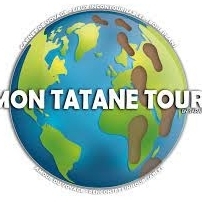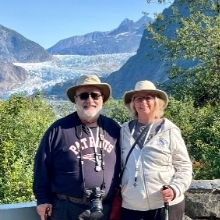
By RayColey
Overall Rating: Excellent
| Sail Date: | 02/26/2017 | |
| Destination: | Mediterranean | |
| Departed From: | Civitavecchia (Rome) |
| # of Nights: | 7 Nights | |
| Cabin Type: | Verandah | |
| Sailed As: | Couple |
| Food: | <p>0</p> | |
| Itinerary: | Excellent | |
| Cabin: | Excellent | |
| Entertainment: | Very Good | |
| Overall Value: | Excellent |
| Spa/Fitness: | Excellent | |
| Embarkation: | Excellent | |
| Debarkation: | Excellent | |
| Staff/Service: | Excellent | |
| Overall Rating: | Excellent |
TREASURES OF THE MEDITERRANEAN
VIKING SEA
We took this cruise of seven nights and days right at the end of February and into March. Viking packed a lot into those seven days - there was only one sea day, and it was at the beginning of the cruise - and most of those days fell into the "WOW" category.
After giving it some thought, I decided to break the review into two parts: The Viking Sea itself, and the ports.
THE SHIP:
We certainly were not prepared for the Viking Sea. We have been on small ships before (our first family cruise, back in '98 was on the Renaissance II, a ship that held less than 500 passengers) and we had seen how well Viking uses space when on the Viking Hlin in December '15, but the design of the Viking Sea was more than impressive. The use of available space was extremely well-planned, and the ship was polished and tidy. The crew and staff were exceptional, not only ready to help but also ready to anticipate needs and fill them.
The major point that needs to be stressed is that pretty much everything is included in the price of the cruise (exceptions are optional excursions - although there are always free, included excursions available - spa treatments and mixed drinks.) Sodas, beer, wine and specialty coffees are always available, and free, as is the contents of the small refrigerator in your cabin - sodas, bottled water, beer and juice.
The cabins all offer verandas, and there are no interior cabins at all. Everyone has a view. In our cabin, the access to the closet, which is beside the bed, is a bit difficult when one's partner is dressing, but otherwise there was plenty of room. The living area is spacious and lends itself to planning sessions, relaxing and reading, watching the large, flat-screen TV or simply enjoying the built-in free Wi-Fi (this feature is free, ship-wide.) The verandas are spacious and appointed with comfy chairs and a table. Perhaps the nicest feature in the cabin was the heated floor of the bathroom - nice when popping out of bed for a trip to the loo in the middle of the night.
The ship has two swimming pools, neither one on the scale to which we have become accustomed by the big, 3000-5000 passenger lines, but quite adequate for the number of passengers on board. The Infinity Pool in the bow of the ship looks right out on the oncoming sea, while the main pool is amidships. Both pools have nearby jacuzzis, and taken together probably hold fifty or sixty people comfortably. I would be surprised to see the main pool overloaded.
The theatre does double duty as the gathering point for excursions, as a venue for lectures, and an entertainment center. As if that weren't enough entertainment capability, movies are shown on a giant screen behind the main pool at night, and there are several areas where musicians can entertain guests, generally with classical music (which suits me fine.) If your taste runs to jazz, there is a small jazz club tucked in the forward area. Lounges are everywhere, and all of them were comfy and with waiter service. There are not a lot of "game" activities, but you can always find a dancing venue in the evening, and cultural or travel lectures, plus classical music performers (string trio, guitar, piano) several times a day.
I could do a separate review of the spa. The use of the spa is, like all the other things mentioned above, free for guests. This includes a cavernous jacuzzi, the size of a small swimming pool, plus an additional built-in personal jacuzzi, a steam room, a cold room, a cold-bucket shower (not in service when we were there) and a sauna. I could have lived in that spa for the whole trip, if everything else had not been so great! There was also a completely outfitted gym. The only charges were for the individual spa treatments, such as massages, hair salon and so forth. The spa also sponsored free health classes for groups, plus exercise sessions both inside and out.
Dining facilities were available in the Main Dining room, the World Cafe (buffet service, similar to RCI's Windjammer,) the Chef's Table and Manfredo's Italian specialty restaurants, and the Norwegian-styled Mamsen's for breakfast and lunch. Of course, you can get food poolside and in several of the lounge areas, plus 24-hour room service (which is free of charge, naturally.) The food at all these places is great. I do have one complaint, though: I have gotten used to having one or two dishes of local specialties available in the dining room, but this was not part of the Viking menu.
What is missing? The casino. Nope, no casino aboard the Sea. We never missed it, because there was so much to do elsewhere, but inveterate gamblers may go through withdrawal.
Excursions are one area where the included meets the optional. At every port, there is a local tour (usually walking/sightseeing bus combined) with a well-informed and personable guide. There are also several optional tours which usually run about $100, and which will cover more ground. Depending on whether you want a sampling of the local culture, which will be included in the price of your ticket, or a more intensive immersion, you may wish to ante up for more coverage at an additional price. We tried both ways, and it worked out well, taking the included tours in Cagliari, Algiers and Valencia, and the optional tours in Tunis and Valletta. The cities on either end of the cruise (Rome and Barcelona) cannot be toured in the time allotted without purchasing extensions. Again, we did it both ways, getting the extension in Rome and not in Barcelona. Below are our impressions.
THE PORTS:
ROME: We had two nights in Rome, and managed to get ourselves around to all the major attractions. The hotel provided by Viking was a four-star Grand Hotel Palace on Via Veneto, which is upscale and very near to both Trevi and the Spanish Steps, both of which we visited in "spare" time. We booked an early tour of the Vatican with the Viator agency (through Jan Neves, a CC member and a world-class agent!) which got us in an hour and a half early, so that we had no crowds with which to contend. We actually visited the Sistine Chapel twice - once with the tour and a second time about two hours later, using it as a shortcut to another section of the museum property) and the difference was amazing. The first time, we were able to sit on the benches and take our time looking at all the artwork, while the second time, people were already being hustled through. We highly recommend doing a tour. Later on the same day, we took another Viator tour through the Colosseum and Roman Forum. Again, avoiding the lines and covering a lot in a the time we had available. Viking provided transfers from the airport to the city and from the city to the embarkation port, and had agents actively looking for and finding guests. Viking doesn't like people to get either lost or delayed!
VALLETTA: After a sea day which included navigating the strait of Messina, a kind of zigzag navigation which also entailed avoiding the twin dangers of Scylla and Charybdis (thankfully, Odysseus showed us how this is done,) we put into the port of Valletta, Malta in the wee hours of the morning. I would have preferred to spend a little more time asea and arrive during the early daylight hours, because the approach to Valletta is one of the most impressive dockings one can find, with the island's huge fortifications facing seaward, and visible for more than a half hour during the docking process.
This was our second visit to Malta, so we declined the overall island tour and headed straight for Mdina, which is one of the best-preserved old world cities still inhabited today. We had a guided tour of the place, which afforded us a lot of history and local lore, but on our next visit (oh, yes. We intend to return) we will probably just take a cab to Mdina and spend a half day browsing the shops and having coffee and chocolates at one of the numerous cafes there.
Returning to town, we wandered about the city, taking in the sights and sounds of the day - and an important one it was, being Carnival, the day before Lent. The festivities are not as intense as one might find in Rio or New Orleans, or in Venice, but it was a lot of fun. We finally took the newly-opened elevator back down to the docks.
TUNIS: What a wonderful introduction to North Africa the capital of Tunisia affords! The port is actually at some distance from the city, but Tunisia is ready for the tourists - just across the docks we find a labyrinth of shops, displays and even gaily decked out camels, which can be ridden around the dock area for a few dinari. Do the Tunisians appreciate the tourism? In order to avoid traffic delays, we got a police escort into the city, turning an hour's drive into a more moderate half-hour.
The first place we visited was the world-class Bardo Museum - if you like architectural decorative arts. It was fascinating, but in fact we could have used a bit less of it, especially since it took time away from other places to visit.
For pure fun, there can't be anything more interesting than visiting a souk, which is not just a market, but a social gathering place, a place for conducting business, arranging marriages - everything concerned with daily life in an Islamic city. We were quite welcome, not only there in the souk, but all over the area. Much too easy to spend hours in a souk, and this one was quite similar to the Grand Bazaar of Istanbul, and welcomed bargaining for the best price as a way of life.
We next went to see Carthage, and here we would have gratefully traded away twenty minutes from the Bardo Museum for a more extensive view of the Carthaginian ruins. We visited the Roman baths, which was an obvious engineering masterpiece. No wonder the Romans ruled the Mediterranean world.
On the way back to the ship, we stopped for a half hour at the American WWII Cemetery, maintained impeccably by Tunisian armed forces guard for thirty-seven years. I was so impressed by the dedication these people felt to the Americans who had fallen in opposing the German occupation forces, that I stopped to thank the guard there for his country's being our steadfast friend for so long, and this brought tears to his eyes, and his heartfelt thanks.
CAGLIARI: Sardinia, an island outpost of Italy, his its own culture, character and even dialect. Mountains rule here, and although not so very high as on the European mainland, they still offer enough height to boast winter sports venues as well as summer hiking and camping. We traveled up and down the mountain roads, being rewarded with lovely views of valleys and sea, including pink flamingoes! The bus tour stopped for good about halfway up the mountain, and we took an historical stroll back down, viewing castles, churches and structures. The walk down was not difficult, and the only problem was the fact that the only restroom available was at a coffee shop about halfway down. You can't imagine the line. Back at sea level, we had an hour or so to shop and sip lattes.
ALGIERS: Algeria is new to the tourist business, and although they are trying hard, they are five to ten years behind Tunisia is being well-prepared. Everyone is friendly to a fault, but they are deathly afraid to let the ship passengers wander off on their own. We had wished to book the Casbah tour, but it had been filled up before we were allowed to make reservations. This is one of my two complaints about this Viking package. Unless you book one of the most expensive suites, you may very well be locked out of a tour you want, because Viking allows booking excursions based on how expensive the accommodation you book. As it turned out, the Casbah itself, which is at once the living quarters, business offices and souk, is probably not ready for tourism, since at the present time, the bulk of what can be seen on a tour there is vegetable stalls, boxes and donkey poop (donkeys provide the cartage for wares that are bought and sold in the Casbah.) I would like to return in five years or so, to see how things have evolved.
VALENCIA: Spain always winds up being, if not everybody's favorite, at least everybody's trustworthy standby. You can count on it not being overly expensive, having good opera, and offering clean, well-maintained and colorful neighborhoods. We spent the bulk of our time here at the Central Market, where I got a good opportunity to practice my Spanish (although Catalan is the preferred language) and test my sense of direction (because the streets wind around a lot and the buildings are tall and close together, so you can't really see where you're headed.) Valencia has particularly nice cathedrals and churches.
BARCELONA: We put into port too late to afford the passengers any time to explore Barcelona unless they had purchased an extension of the cruise package. We had been there before, so we can recommend the city as a great place to enjoy the arts and the architecture, but on this cruise we had no time to do that.






.jpg.8fb1c18b0b0cf0ae93aa65638e2d741f.thumb.jpg.9b23f05e1c41fa8d67e5e51e7eebba86.jpg)







Recommended Comments
Join the conversation
You can post now and register later. If you have an account, sign in now to post with your account.